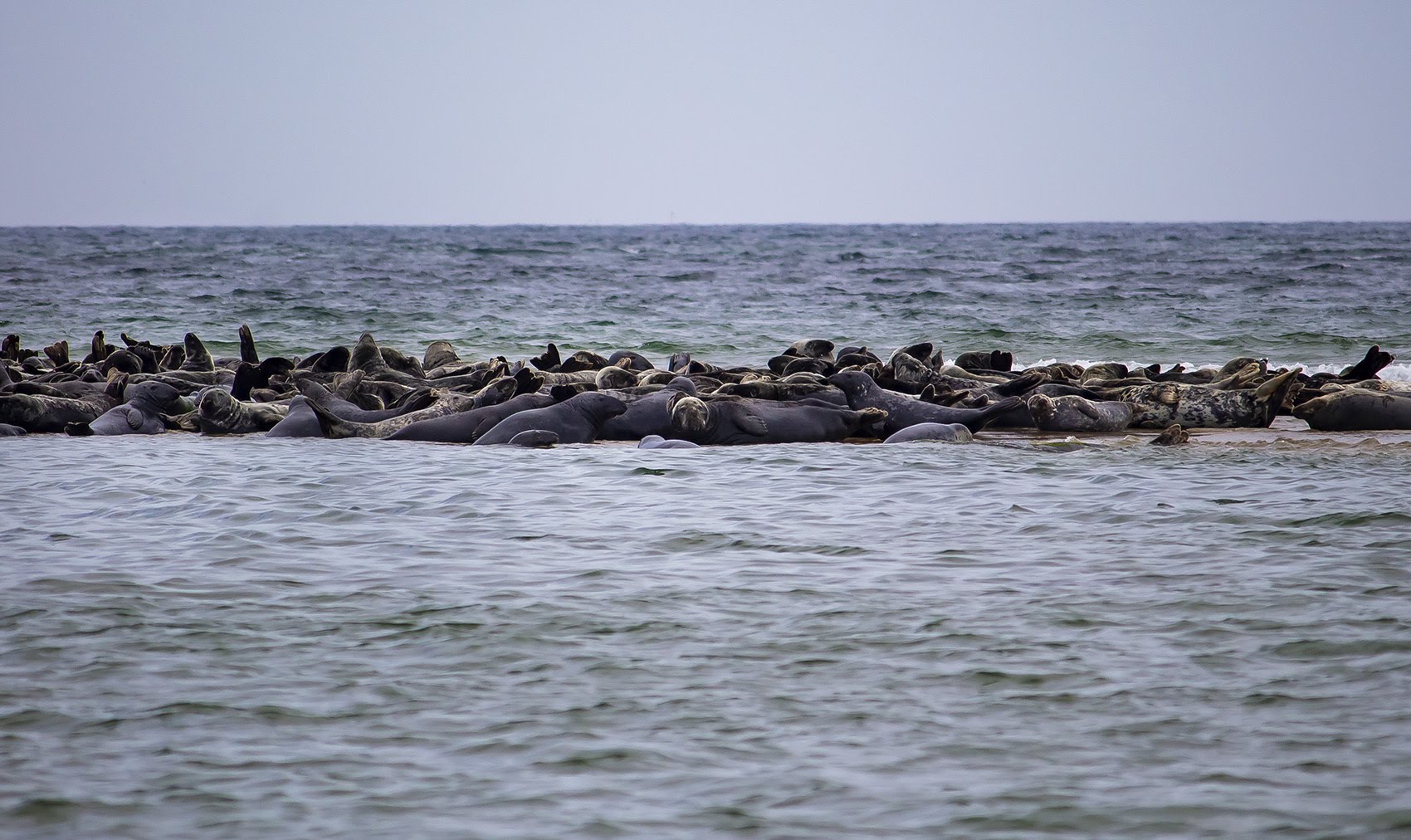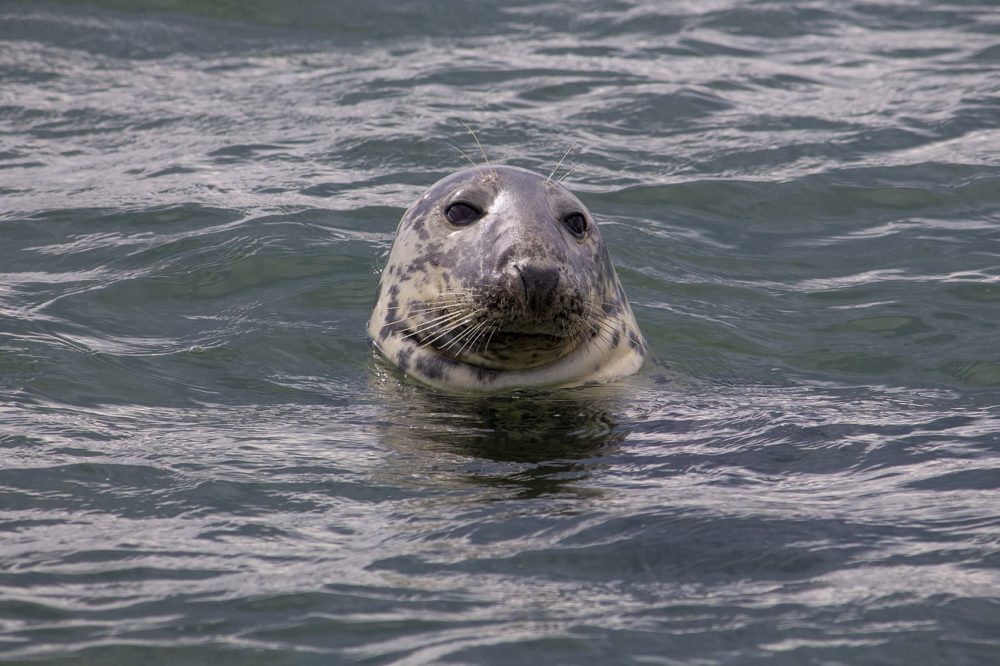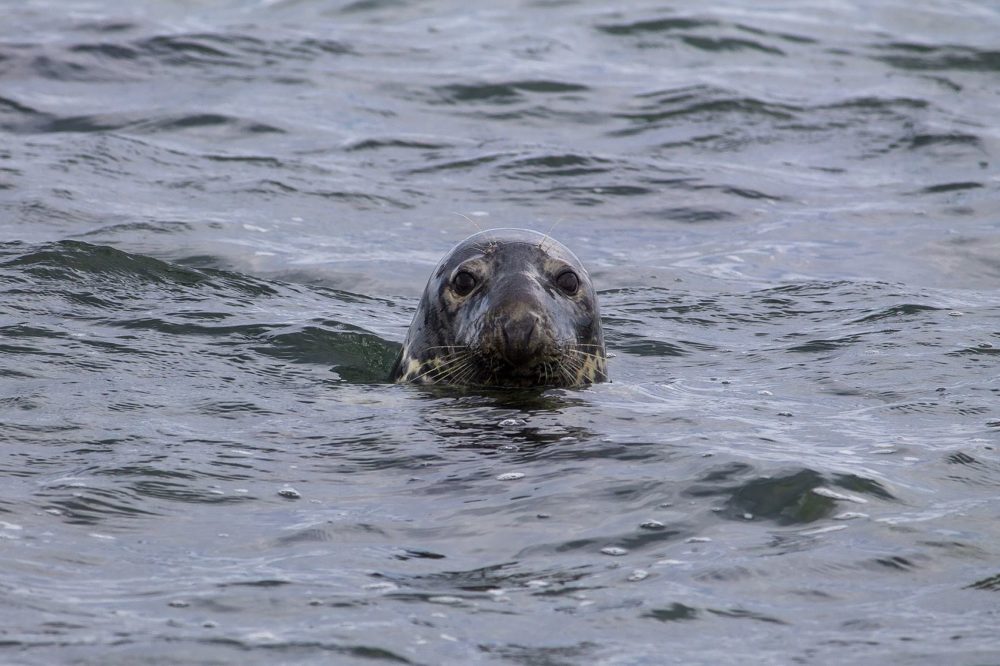Advertisement
Seals On Cape Cod Are More Than Just Shark Bait
Resume
There are tens of thousands of seals on Cape Cod and the Islands, and everyone seems to have an opinion about them. Some see them as an adorable tourist attraction that helps the ecosystem. But to others, they’re Public Enemy No. 1 — a messy, fish-eating shark magnet that needs to be culled.
Chatham-based commercial fisherman Nick Muto is one of the latter.
“Seals used to be a thing that we didn't see,” he says. “[Now] I see them every day on the water. I spend probably 200 days a year on the water, and the amount of seals that we see — it's mind-blowing that people can't identify that we have a species that is out of control here.”
He says fishermen see the seals as “totally protected eating machines.”
“They've destroyed a lot of the inshore fish populations," he says. "They've become a real nuisance to people, fishermen. They've attracted the sharks. And they're also polluting the waters."
The seals do attract sharks, but are they out of control? That’s a tricky question.
When it comes to the seals, emotions run high — people’s lives and livelihoods are on the line. But what does scientific research tell us about the animals?
The seals hauled up on the Cape are gray and harbor seals. Harbor seals are 5 to 6 feet long and weigh up to 285 pounds. Gray seals are bigger; they’re between 7 and 8 feet long, and can weigh up to 800 pounds. Both are native to the area, though no one really knows their historic population size.
Humans began hunting the seals in earnest in the late 19th century. Massachusetts offered a bounty for them between 1888 and 1962 — up to $5 per seal nose — and Maine had a similar bounty from 1891 to 1905 and 1937 to 1945. It’s unclear exactly how many seals were killed for bounty during that period — one study puts the figure between 72,000 and 135,000 — but by the mid-20th century, they were almost extinct in U.S. waters.
After the bounty system ended, the seal population began to recover. (The 1972 federal Marine Mammal Protection Act codified and strengthened this protection.) The recovery was slow at first, but in the last decade or so, the seal population has taken off — or “exploded,” depending on whom you ask.
It’s unclear precisely how many gray and harbor seals there are in southeastern Massachusetts because they move around so much. A seal you see swimming in Chatham Harbor today could be resting on Sable Island in Canada next week.
In 2017, researchers used Google Earth images to try to figure out how many seals were on the Cape and Islands. Their results indicate the population of both gray and harbor is between 30,000 and 50,000.
Scientists with the Northwest Atlantic Seal Research Consortium say better population figures come from the National Oceanic and Atmospheric Administration (NOAA), which include the animals' whole range in U.S. waters. NOAA estimated in 2018 that there were between 22,000 and 33,000 gray seals and about 75,000 harbor seals. (The total Canadian seal population is thought to be about 500,000 animals.)
Bottom line: There are a lot of seals off the coast of New England and Canada. But are there too many?

Should We Cull The Seals?
Biologists often look at how many of a given species an ecosystem can sustain. They have a term for this: "carrying capacity."
If the population exceeds carrying capacity, “the resources begin to crash and the population follows it,” says Sharon Young, an ecologist and the marine issues field director of the Humane Society of the United States.
If the seals had reached this threshold, their population would be decreasing, not increasing, she says.
“If you want more of, less of or the same number of a species, that is a value judgment. That has nothing to do with science,” she says. “The environment may tolerate a whole lot more and be perfectly healthy, but we may decide we’ve had enough of them.”
Some people on the Cape have reached this point and advocate action, like culling the seals. But others, like Young, say that killing a thousand — or even a few thousand — isn’t going to make much of a difference because there are so many of them.
“I think there’s a sometimes-naive notion that this is a discrete population that we have some ability to control,” she says, offering an analogy: “If I kill all the squirrels on my bird feeder this week, within a fairly short period of time, there will be other squirrels because I have an attractive resource for them.”
By this logic, we’d have to kill many thousands of seals to make a dent — something she thinks would do more to harm the image of Cape Cod than sharks.
Are The Seals/Sharks Hurting Tourism?
Politicians like Barnstable County Commissioner Ronald Beaty worry that after last summer's fatal shark attack, tourists will avoid the Cape. In a recent letter to the editor in The Cape Cod Times, he wrote that the seals threaten the “regional tourism economy.”
Fisherman Muto shares this concern.
“It's not going to be long before people start passing over Cape Cod and heading to other places where they can actually go in the water,” he says.
According to the Cape Cod Chamber of Commerce, the rental market on the Cape has been “soft” this summer, but in an email, CEO Wendy Northcross wrote that “there is no data to support any shift in consumer behavior due to the sharks.”
She also wrote about a focus group the chamber surveyed in May to learn about perceptions of Cape Cod.
“The topic of sharks came up without prompting," she wrote. "When queried if the sharks would deter them from their vacation plans — to a person the answer was ‘no’. [People] said it was more likely they just would not swim in water more than waist-deep. They cited all the other things to do and see on Cape Cod — and the key reason they visit the Cape was in alignment with other market research we’ve done over the years — to visit friends and family — or to relax and recharge.”

Are The Seals Eating Too Many Fish?
Muto says seals aren’t the only reason some commercial fish stocks are down, but they’re a big factor.
“They break up a lot of the schools of fish [and] they eat a good percentage of their body weight every day,” he says. “They’re also incredibly wasteful eaters. I've literally watched them pick up fish, whole fish, and eat just the bellies and the liver out of the fish and discard the rest of the fish.”
Ecologist Young says she’s aware of these concerns, but that studies have shown the seals eat a diverse diet that changes with the seasons.
“We know from studying scat that most of what they’re eating are not commercially valuable fish," she says. "They certainly do eat fish that we ourselves hunt commercially — and so there is that competition — but I think there are a lot of mistaken understandings about what they eat.”
Marine biologist Kristen Ampela studied more than 300 seal feces samples and 49 seal stomachs, and in 2009 found that sand lance accounted for at least half of what seals were eating, and cod comprised 6% of their diet by weight and herring comprised 4%.
That said, the impact the seals are having on fish stocks is harder to determine. Other factors like climate change, pollution and historic over-fishing likely play a big role too, Young says, and more research is needed.
Are The Seals Polluting The Water?
People are also concerned about the seals “befouling” the water with their waste. So far, there have been no specific studies that have looked at whether seals are polluting beaches, but a 2013 study from the Woods Hole Oceanographic Institute looked at 10 years of coastal water quality data from the state Department of Public Health and found no correlation between beach closures and where the seals congregate.
In fact, some researchers think their feces actually contributes to a thriving ecosystem.
“In natural systems, particularly offshore systems, nitrogen can be limited,” says Joe Roman, a conservation biologist at the University of Vermont. And when seals — like whales and other large marine animals — defecate in the water, they deliver a needed dose of nitrogen.
“[Their feces] increases the growth of algae and phytoplankton, [which] is taken up by zooplankton and fish in those areas,” he adds. “It can actually increase the total abundance of species in that area.”
He says the feces helps plants and animals on land too.
“Gray seals have only been back for a couple of decades, and have only hit these large numbers in recent years. It’s almost like a great experiment that we have to see what the impacts of these seals are going to be on Cape Cod,” he says. “We don’t know what other cascading effects seals will have. I think there’s good reason to believe that they’re going to change the nutrient dynamics, but they may also have new surprising roles. And that’s the fun part about science.”
This segment aired on August 2, 2019.
